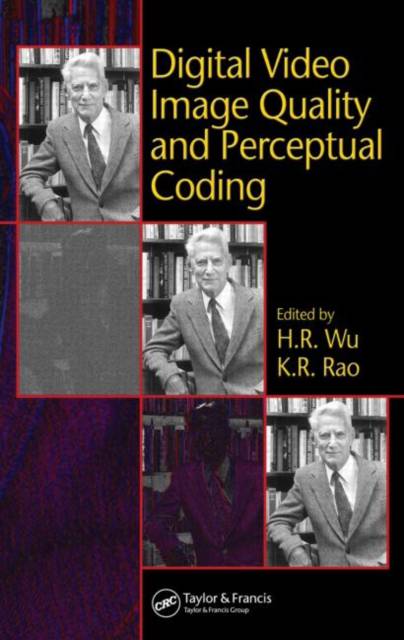
- Afhalen na 1 uur in een winkel met voorraad
- Gratis thuislevering in België vanaf € 30
- Ruim aanbod met 7 miljoen producten
- Afhalen na 1 uur in een winkel met voorraad
- Gratis thuislevering in België vanaf € 30
- Ruim aanbod met 7 miljoen producten
Zoeken
Digital Video Image Quality and Perceptual Coding
€ 427,45
+ 854 punten
Omschrijving
The hand is quicker than the eye. In many cases, so is digital video. Maintaining image quality in bandwidth- and memory-restricted environments is quickly becoming a reality as thriving research delves ever deeper into perceptual coding techniques, which discard superfluous data that humans cannot process or detect. Surveying the topic from a Human Visual System (HVS)-based approach, Digital Video Image Quality and Perceptual Coding outlines the principles, metrics, and standards associated with perceptual coding, as well as the latest techniques and applications. This book is divided broadly into three parts. First, it introduces the fundamental theory, concepts, principles, and techniques underlying the field, such as the basics of compression, HVS modeling, and coding artifacts associated with current well-known techniques. The next section focuses on picture quality assessment criteria; subjective and objective methods and metrics, including vision model based digital video impairment metrics; testing procedures; and international standards regarding image quality. Finally, practical applications come into focus, including digital image and video coder designs based on the HVS as well as post-filtering, restoration, error correction, and concealment techniques. The permeation of digital images and video throughout the world cannot be understated. Nor can the importance of preserving quality while using minimal storage space, and Digital Video Image Quality and Perceptual Coding provides the tools necessary to accomplish this goal. Instructors and lecturers wishing to make use of this work as a textbook can download a presentation of 786 slides in PDF format organized to augment the text. accompany our book (H.R. Wu and K.R. Rao, Digital Video Image Quality and Perceptual Coding, CRC Press (ISBN: 0-8247-2777-0), Nov. 2005) for lecturers or instructor to use for their classes if they use the book.
Specificaties
Betrokkenen
- Uitgeverij:
Inhoud
- Aantal bladzijden:
- 636
- Taal:
- Engels
- Reeks:
Eigenschappen
- Productcode (EAN):
- 9780824727772
- Verschijningsdatum:
- 18/11/2005
- Uitvoering:
- Hardcover
- Formaat:
- Genaaid
- Afmetingen:
- 174 mm x 236 mm
- Gewicht:
- 966 g

Alleen bij Standaard Boekhandel
+ 854 punten op je klantenkaart van Standaard Boekhandel
Beoordelingen
We publiceren alleen reviews die voldoen aan de voorwaarden voor reviews. Bekijk onze voorwaarden voor reviews.










